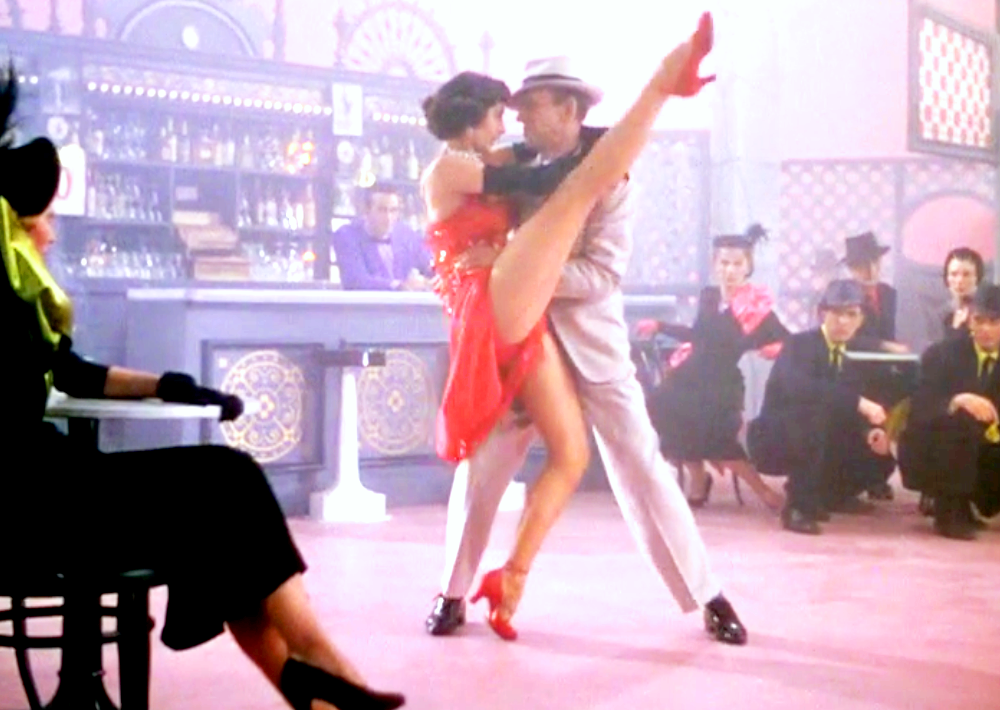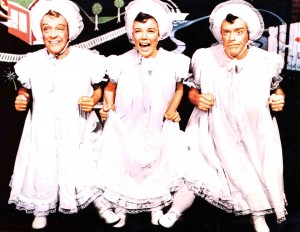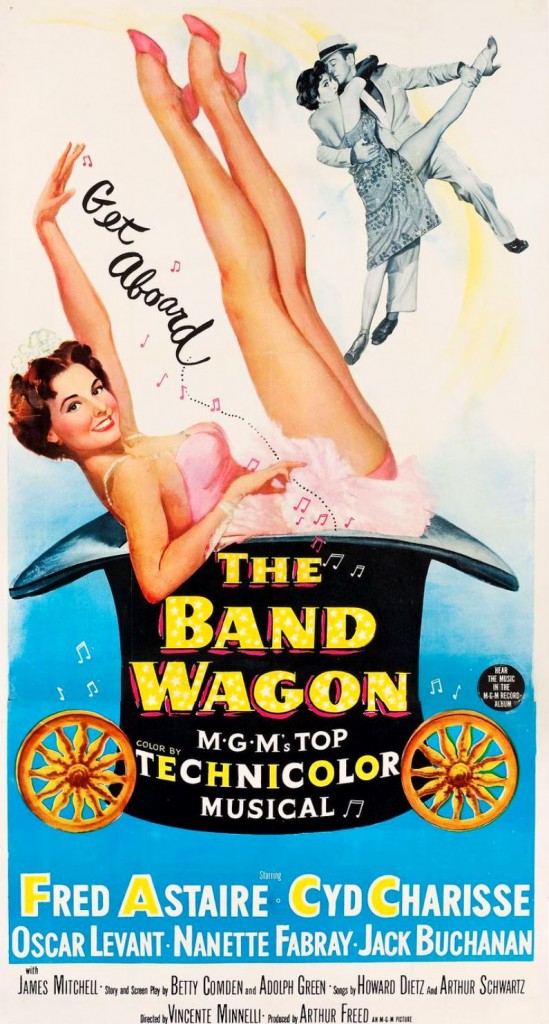
“She was scared. Scared as a turkey in November.” – Tony Hunter
“Singin’ in the Rain” is supposed to be my all-time favorite musical, and everybody else says it too, but after awhile I knew it by heart so well I was happy to stumble upon a new favorite. The Band Wagon (1953) a dozen viewings later is something of a miracle to me in which I never cease to find something else to delight in. Fred Astaire starred in it just before he was sliding into the twilight of his career, and he happened to play a fallen star named Tony Hunter, a one-time matinee idol and hoofer (that’s a tap-dance man), who has hit a brick wall in his career and goes to Broadway to revitalize himself. Just as 1952’s “Singin’ in the Rain” was a backstage musical comedy about Hollywood, 1953’s “The Band Wagon” was a backstage musical comedy about Broadway. They happen to be from the same writers, Betty Comdon and Adolph Green.
It wasn’t “Singin’s” Stanley Donen but Vincente Minnelli directed this one, coming off the heels of his Oscar-winning “An American in Paris,” but while that one had exquisite numbers it was pageant overkill, his work is more cool and spry here. An example would be “Shine On Your Shoes,” the first musical number where Tony Hunter, flummoxed for being out of work, dances his troubles away at a penny arcade, and memorably squares off with a black shoeshine man – and some perplexed onlookers. The scene is jolly in the way he engages with some of the carnival games while he does his shimmy at the same time.
With the help of some friends (Nanette Fabray, Oscar Levant – she spat on his awful prima donna behavior in real life), Tony enlists the services of Jeffrey Cordova (Jack Buchanon), a jack of all trades Orson Welles type with ginormous ego intact, to be the director of his next would-be Broadway hit. Cyd Charisse is a dream of a ballet dancer who is brought in to be Tony’s co-star, and before there is love there is competitive jealousy. But the hiccup is that this musical project turns into Cordova’s update of Faust, alas, a pretentious mess. On the rebound, Tony rallies everybody to bounce back with a musical revue. Sounds like the plot of any given “Muppets” movie that would happen years later, but it is well-worn plot of many years before this too. Just the same, only better.
 Romance is personified in the “Dancing in the Dark” number set in an idealized Central Park. You will take great notice in the carriage ride that employs subtle black & white back projection that gives it a misty look, then the costumes (Charisse’s fit-and-flair cost $1,000 to make), then the actual dancing which is as enchanting and pitch-perfect as they come. After the Faustian debacle, the subsequent musical show numbers are a hoot, and particularly I get giddy over the bizarre “Triplets” which has Astaire, Cordova, and Fabray all appearing as midgets dressed as babies. Actually, they were dancing on their knees while strap-on artificial legs dangled before them. This required many takes because at least one of them would have trouble not falling over.
Romance is personified in the “Dancing in the Dark” number set in an idealized Central Park. You will take great notice in the carriage ride that employs subtle black & white back projection that gives it a misty look, then the costumes (Charisse’s fit-and-flair cost $1,000 to make), then the actual dancing which is as enchanting and pitch-perfect as they come. After the Faustian debacle, the subsequent musical show numbers are a hoot, and particularly I get giddy over the bizarre “Triplets” which has Astaire, Cordova, and Fabray all appearing as midgets dressed as babies. Actually, they were dancing on their knees while strap-on artificial legs dangled before them. This required many takes because at least one of them would have trouble not falling over.
But has there ever been a musical sequence as avante-garde as the climactic “Girl Hunt?” This prolonged and elaborate number contains phantasmagoric lighting, exaggeratingly baroque sets, glittering costumes, surreal play-acting on jazz and noir themes, and flat-out audacity. Ultimately, it epitomizes the kind of old Hollywood elegance that is out of commission in today’s times. Alright, there was one before it even more audacious: the centerpiece ballet number in 1948’s “The Red Shoes” by Michael Powell and Emeric Pressburger.
What you also don’t find today, outside of tentpole Disney films, is this kind of unabashed corniness which is demonstrated all too blatantly especially in the final “That’s Entertainment!” scene (the now ubiquitous song was written for this film). There’s a glee to “The Band Wagon” though, that says, all of our old clichéd ideas works just as fabulous as the new avante-garde experiments – nobody among them is going to apologize for entertaining the pants off you. “Singin’ in the Rain” will always remain as the signature representation of what classic Hollywood was, and truly it is a godsend, but “The Band Wagon” – well, these days I can’t get enough of it, even the stuff in it that’s old hat.
112 Minutes. Unrated.
MUSICAL COMEDY / ALL AGES / MASTERPIECE VIEWING
Film Cousins: “Easter Parade” (1948); “An American in Paris” (1951); “Singin’ in the Rain” (1952); “Funny Face” (1957).





